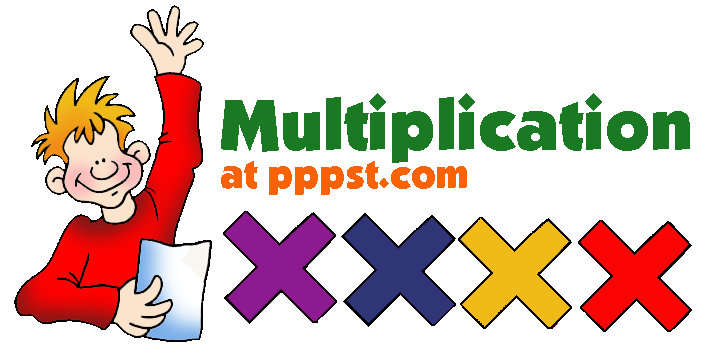Finishing the study of the reading and porposed exercises, will you be better in your hability to solve multiplications, which will make that you can apply this basic operation to your basic operation to your everyday life, in the supermarket or store to do shopping, or in any problem which presents to you, developing like this the logical- mathematical thinking, which is what really will serve you from now.

This is a webquest dedicated to explain some basic concepts about the multiplication to children from first grade to fifth grade that calls for explication or simply want to know more about this basic operation, and serve like supporting material during the math classes or for tutorship at home.

Nombre y Apellidos del Autor:
Idioma:
Nivel Educativo:
Area de Conocimiento:
With your math's teacher help, you will do the exercises and games proposed in the resources, which are available online in the porposed pages. She or he will help you correct and check them.

Introducción:
Got problems to understand the multiplication in your math classes at school? Well, you have arrived to the right place! Here you will find some basic concepts about the multiplication and exercise that you will find helpful to clarify your doubts for sure, with your math teacher's help and the proposed exercises as supporting material in the classes, you will understand better the multiplication concepts and you will have fun while you learn.
La multiplicación
¿Qué es?
Basically, it can be considerated as a repeat of a sum. For example, multiply 3x4, is like sum 3 four times: 3+3+3+3= 12
Is very important that you learn the multiplication table, like this, you will can make multiplications quiclky with just thinking about the multiplication table.
¿What is the name of the multiplication elements?
the multiplication terms are called factors (3x4) and the result is called product. (12)

How to multiply?
When the multiplication has only two factors, the number that we are going to sum is the multiplicand the number that we are going to sum and the multiplier to the times that we are going to sum it.
in the example that we have used, the multiplicand is 3, the multiplier is 4, and the product es 12, which is the result of sum 3 + 3 + 3 + 3 or multiply 3 x 4.
Long term multiplication
It is a special method to multiply large numbers (larger than 10) that only need your knowledge of the ten times multiplication table.
Example:
We want to multiply 612x24
First: we multiply 612x4= (2.248)
Second: we multiply 612x20= (12.640)
Last: we add them together: (2.448+12.640=14.688)
But there's a better way to do the multiplication.
To multiply 612 × 20 we only need to multiply 612 × 2 and place the result one column over (so it is the same as multiplying by 20).
Just be be careful about lining up the columns
In this link, you can find a video of this part in this link: http://www.mathsisfun.com/numbers/multiplication-long.html
Multiplications with more than two digits:
When you are multiplying more than two digit numbers, we just have to move over two spaces:
In the same link, you will find the video of the explication.

I want to thank all the pages I used because they are good resources that our kids can use. Keep doing your job with passion guys :)
Mya, you are really cute! thank you for helping other kids around the world to learn math :3
Enlaces:
WebQuest Title: The Multiplication!
Level to which it is addressed: primary, first grade to fifth grade.
Area in which you can work: math classes or tutorship.
Content covered: Multiply: what is, its elements, the multiplication table, long term multiplications, videos, games and more resources.
Timing: the necessary hours per week, with a computer at home or school with the resources for that everyone in the classroom can see them.
Basic knowledge that the students need: how to use any internet browser, and knowledge to sum and deduct.
Necessary computing resources to develop it: the classroom with the suitable space for every kids and for the teacher (at school) and of course the computer, the projector, between others, and at home a comfortable space for the children and the parents, with the computer so everyone can watch the screen.
Complement resources:
School: the projector, a marker, and in general all the elements the teacher can use to make his/her students to understand the topic.
Home: the attention and dedication of the parents to make their children understand the topic.